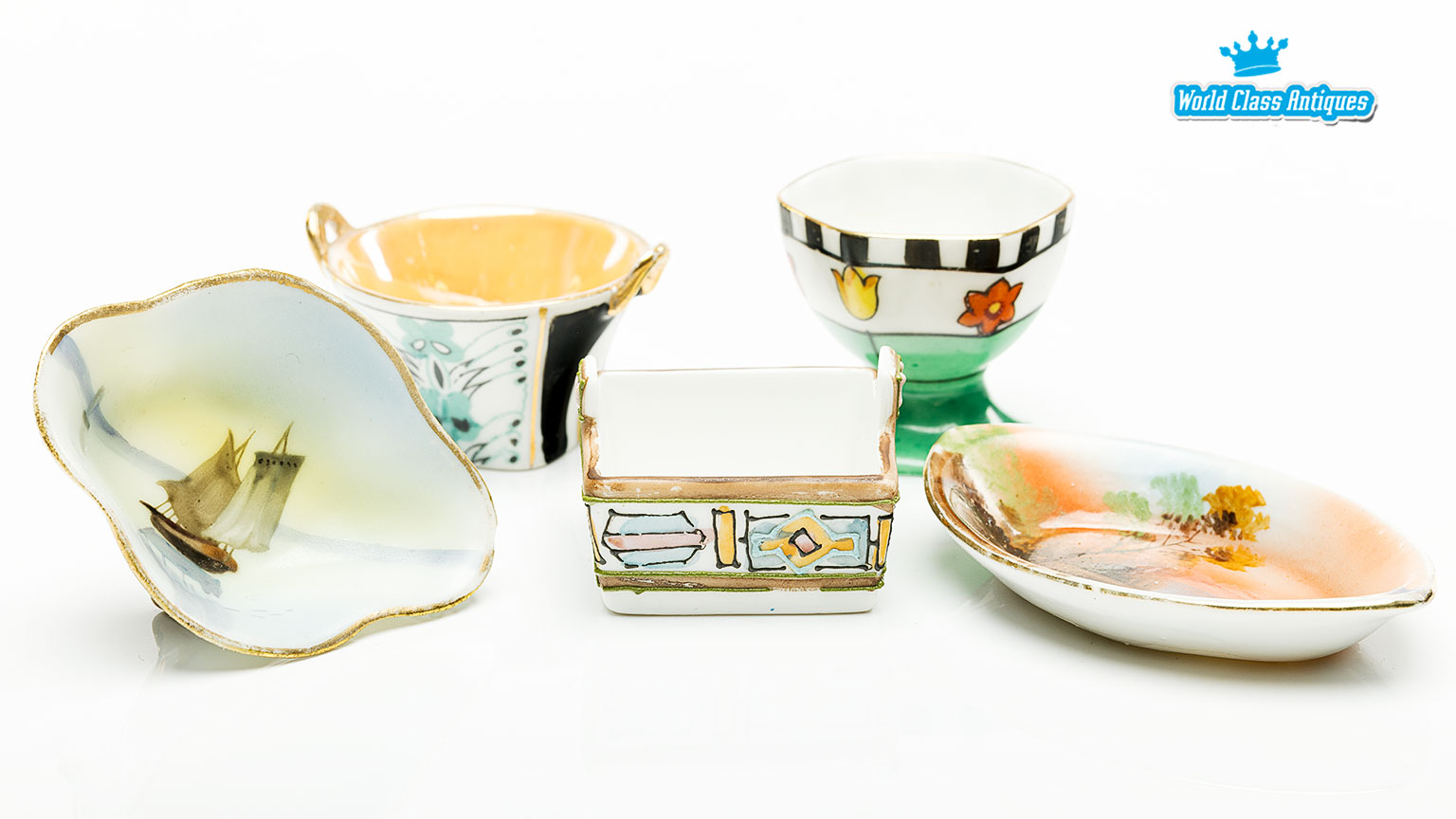In this series, we feature collectibles that check two important boxes: size and affordability. The items highlighted today are small enough to fit into tight spaces, making them easy to store and display. They’re also budget-friendly, so you don’t need to spend a fortune to start collecting. Plus, with careful selection, they may increase in value over time, offering both enjoyment and investment potential.
If you’re wondering what to collect, let’s explore some beautiful vintage salt cellars.
Why Collect Salt Cellars?
If you’re after a small, affordable collectible with plenty of history, vintage ceramic salt cellars are a perfect pick. Priced around $10–$15 each, they’re compact yet charming additions to any collection. These pieces are often hand-painted with intricate designs, with some featuring a lustre glaze, like the one shown below. Their unique shapes make them both visually appealing and functional. Plus, if selected carefully, they can maintain or even grow in value over time.
The word “salt cellar” may sound weird now, yet it has been used for centuries. The word “cellar” is derived from the Old French salier and the Latin salarium, which both relate to salt containers. Before the widespread use of contemporary salt shakers, salt was stored in small, uncovered bowls, typically with tiny spoons for serving. These cellars were a common feature on dining tables, particularly when salt was a vital commodity. Shakers eventually replaced cellars as salt became more widely available, but the name stayed, making them an interesting artifact of dining history.
We’ve included photos of the salt cellars with the photographer’s hand for size reference.
What to Look For
While this post focuses on ceramic salt cellars, there are a lot that were made from glass. Those can be just as collectible, but today, we’re highlighting ceramic varieties marked Made in Japan, Noritake, and Nippon. To note that, when collecting salt cellars, condition is key. Chips, cracks, or heavy wear will lower their value. The best ones to collect are in excellent condition with no damage.
Understanding the Marks
Nippon (1891–1921)
From 1891 to 1921, Japanese exports were marked Nippon, the Japanese name for Japan. This was due to U.S. import regulations under the McKinley Tariff Act, which required products to display their country of origin. In 1921, regulations changed, requiring “Japan” or “Made in Japan” instead.
If you find a ceramic salt cellar marked Nippon, it likely dates from the late 19th or early 20th century, making it one of the oldest and most collectible types.
Made in Japan (1930s and later)
After the Nippon era, most Japanese ceramics were marked Made in Japan, a label that became standard by the 1930s. These pieces are usually high-quality and affordable, making them great for beginner collectors. By the 1950s, most Japanese ceramics were simply marked “Japan”.
Noritake Marks: What You Should Know
Noritake is one of Japan’s most famous porcelain manufacturers, and their marks can help you identify the age and authenticity of a piece. However, contrary to some collector myths, the color of the Noritake mark – green or red – does not always indicate age or value.
- The “M in Wreath” mark, used between 1911 and 1921, appears in various colors, including green, blue, magenta, and gold.
- The “RC” (Royal Crockery) mark, in use since 1911, can also be found in both red and green versions.
- Some later Noritake marks used in the mid-20th century also appear in red or green, making color alone an unreliable way to judge age or value.
- Reproductions exist, so always verify marks with reliable sources when evaluating a piece.
Let’s dive in our selection. The examples featured below are available for purchase in our marketplace as an instant collection of vintage and antique salt cellars.
Salt cellar #1. It looks like a mini egg cup, hand painted in very nice colors. Marked on the bottom as Made in Japan, which indicates a 1930s date of manufacture.
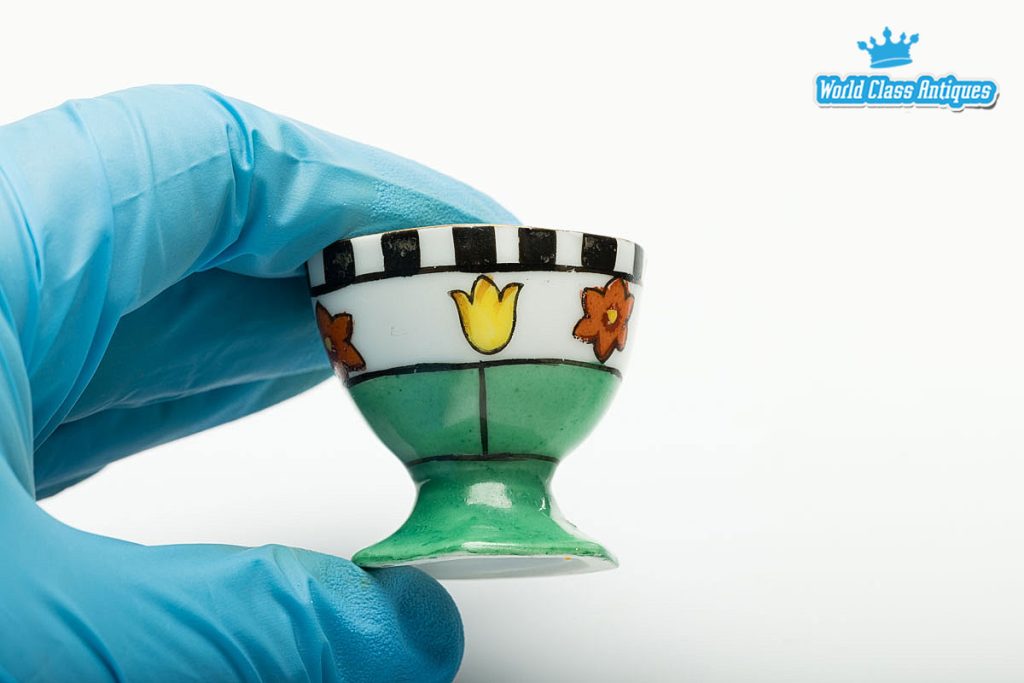
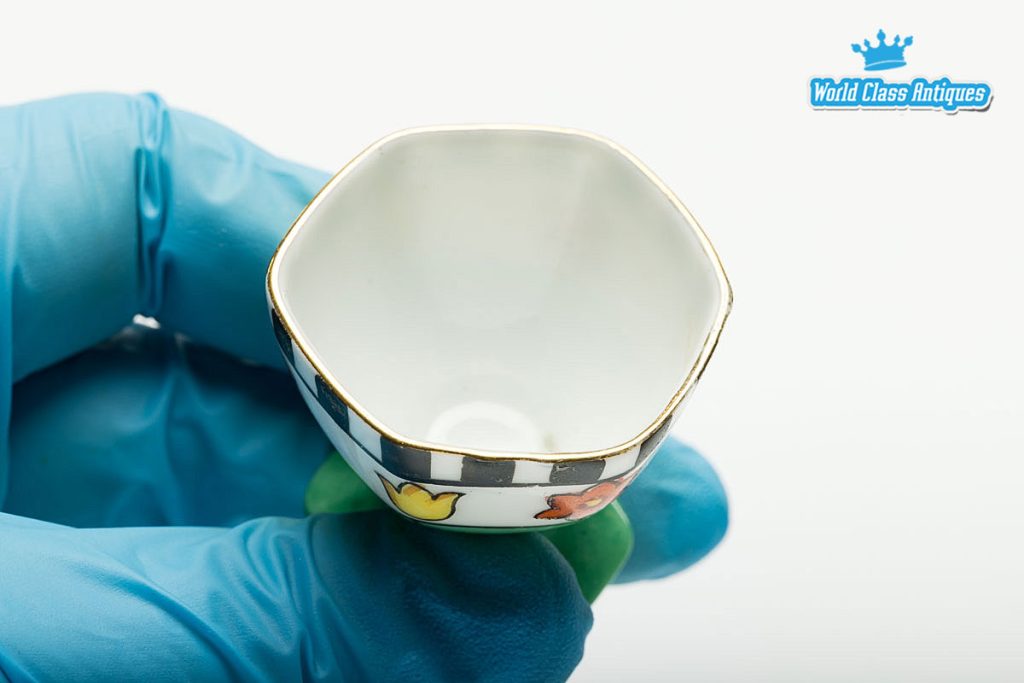
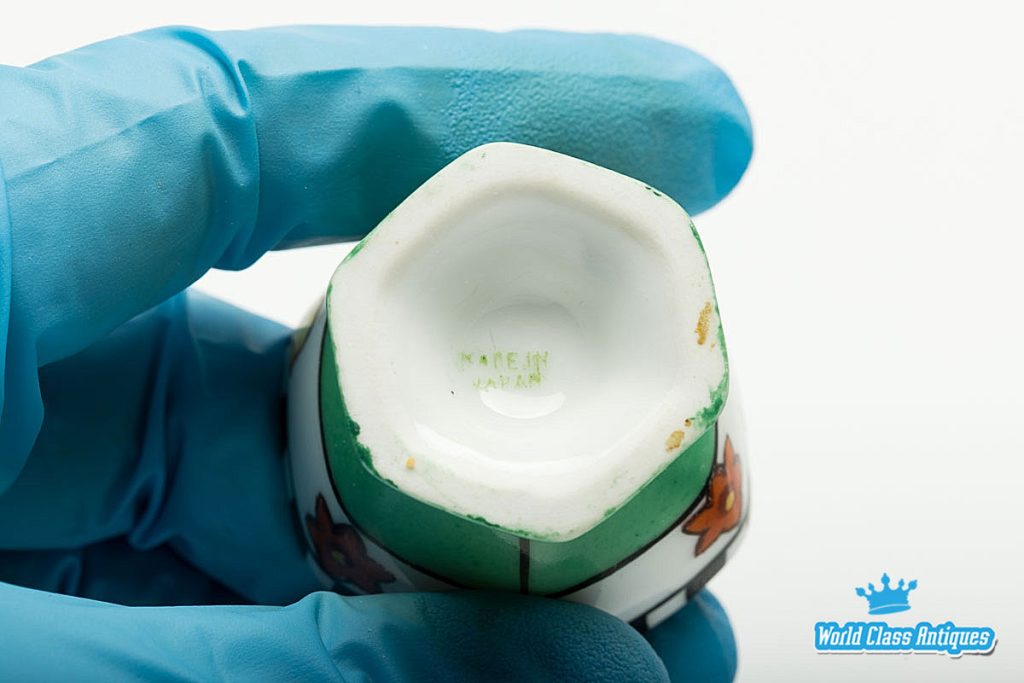
Salt cellar #2. This piece resembles a mini bathtub with four feet and features a hand-painted scene of a boat on a lake. The details are impressive, even capturing the boat’s reflection in the water.
Marked on the bottom with the Noritake green “M in Wreath” mark, this stamp was used by the Morimura Brothers, who imported Noritake china. This mark was in use from 1911 to 1921, making this salt cellar over 100 years old and officially an antique.
While this salt cellar carries the original Japanese Noritake porcelain mark – there are plenty of great resources comparing genuine and fake stamps.
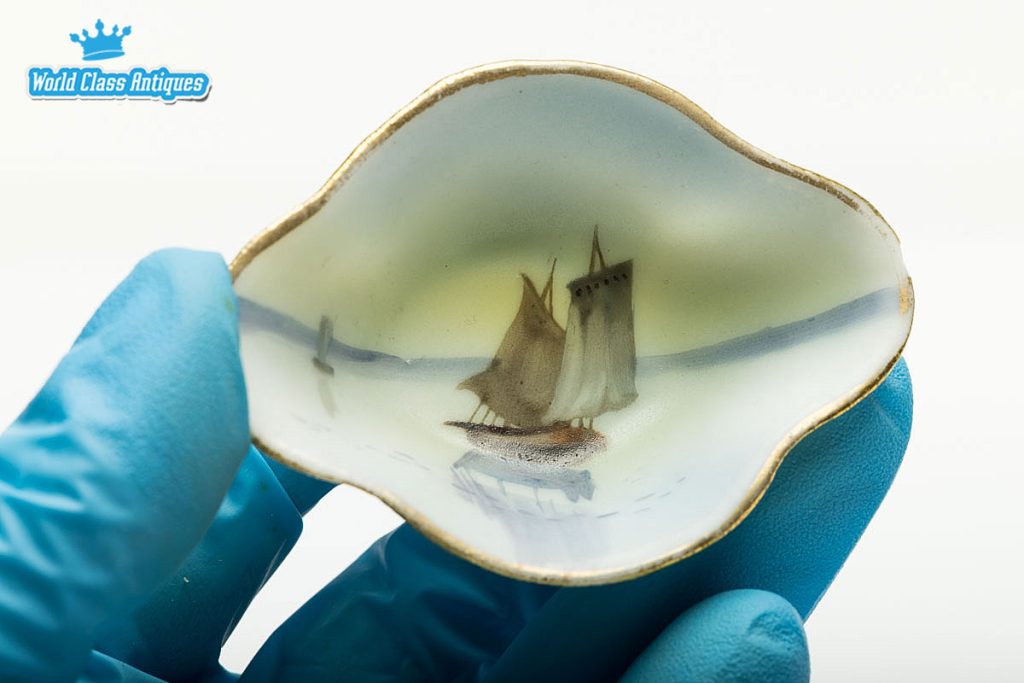
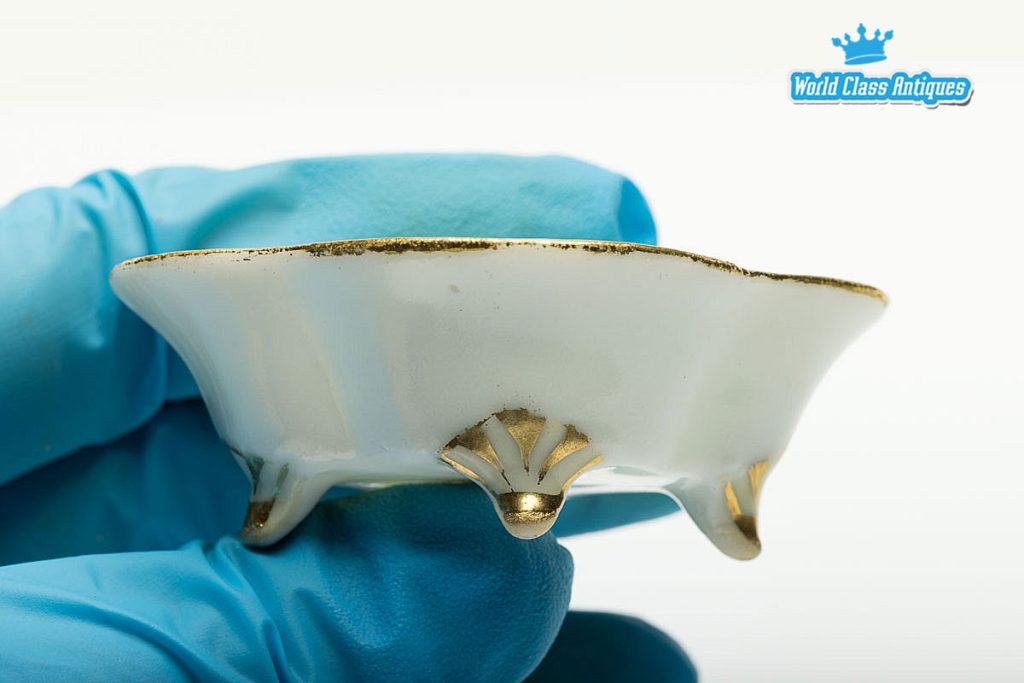
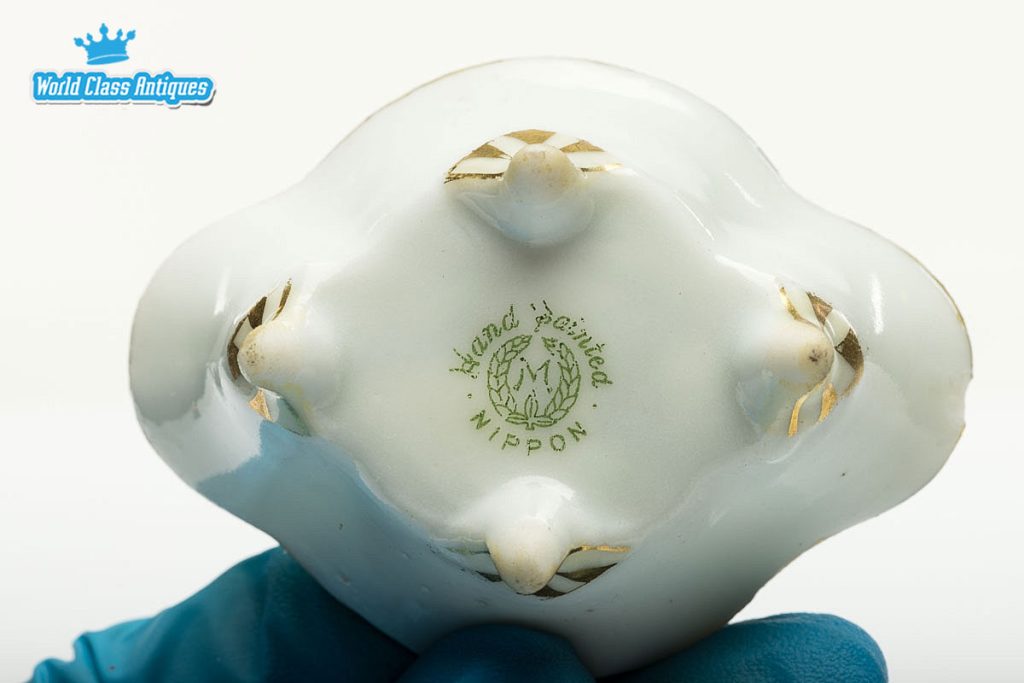
Salt cellar #3. Another hand painted example of 1930s Japanese salt cellars, this one resembles a little deep dish in the shape of an oval. It is nicely drawn with a tranquil lakeside landscape and a big tree at sunset. marked on the bottom: Made in Japan.
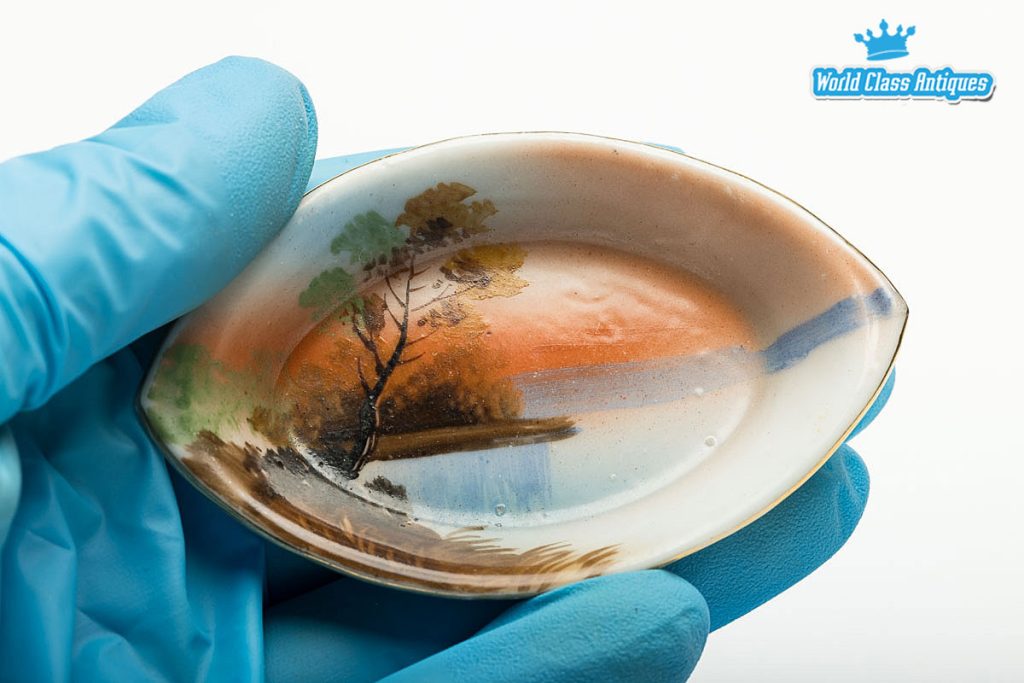
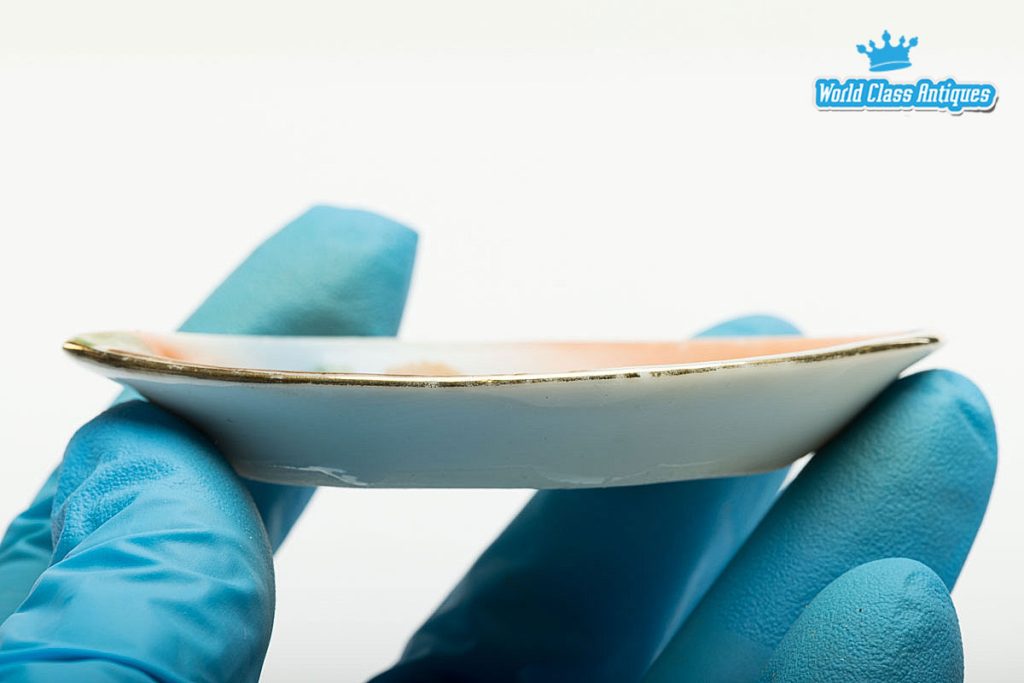
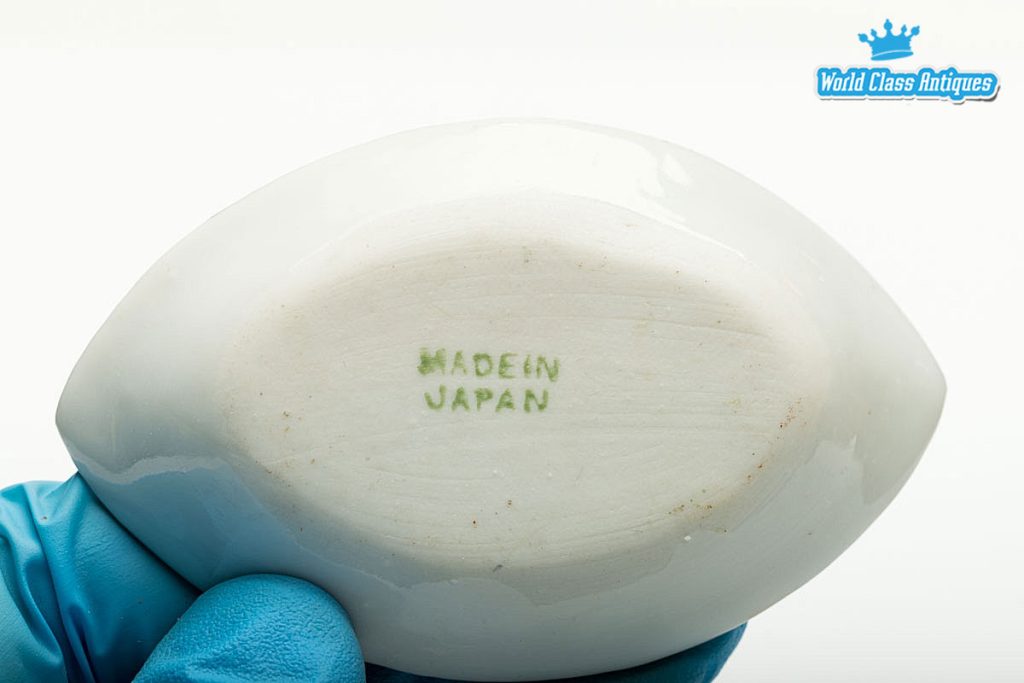
Salt cellar #4. A very pretty Lustre-glazed mini cup with two handles. Marked on the bottom with the letter “M” as in “Morimura”, surrounded by a wreath, crowned by “Noritake” in capitals and below in capitals. Hand painted and made in Japan. Based on a few references, this mark started being used in 1918.
Lustre glaze has been used in ceramics for ages, going back to Islamic pottery in the ninth century. In Japan, the technique gained popularity in the late nineteenth and early twentieth centuries, especially as Japanese porcelain companies, such as Noritake, copied Western ceramic patterns for export markets.
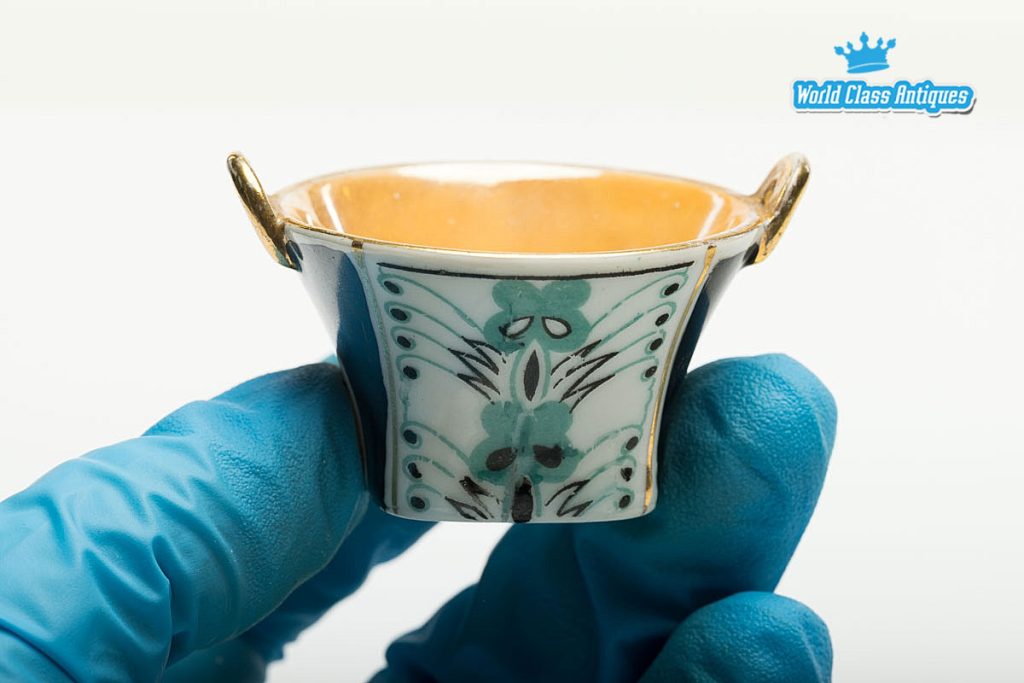
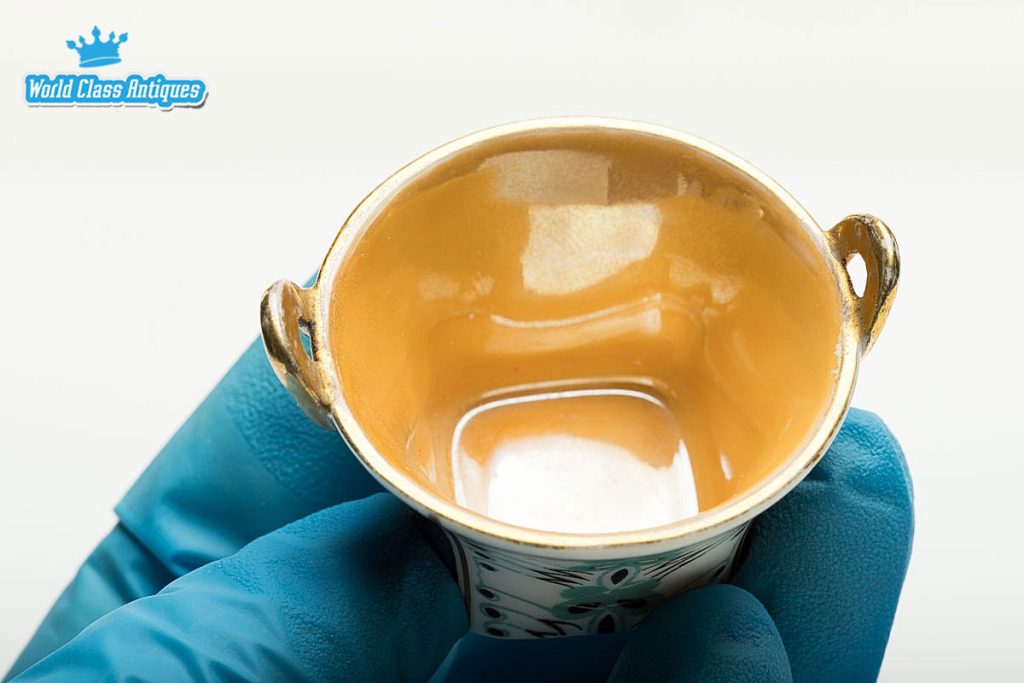
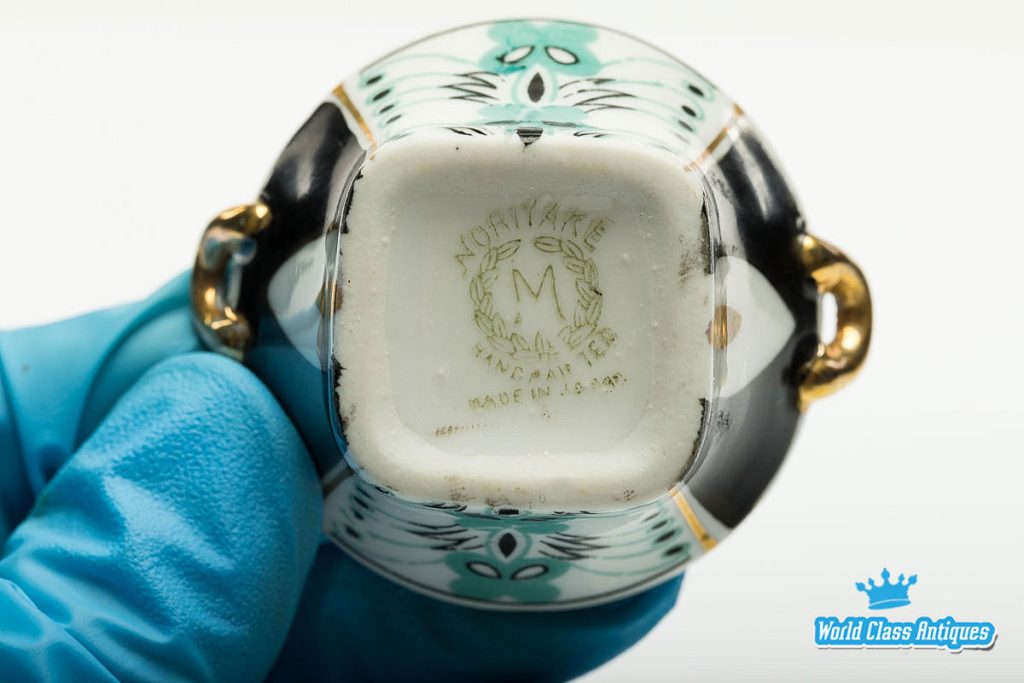
Salt cellar #5. It is a square-shaped bowl with two handles and raised geometric shapes for ornamentation. It’s quite lovely and a delight to hold. Marked on the bottom with the Rising Sun Nippon. Hand Painted, Nippon. The mark has been used as early as 1911.
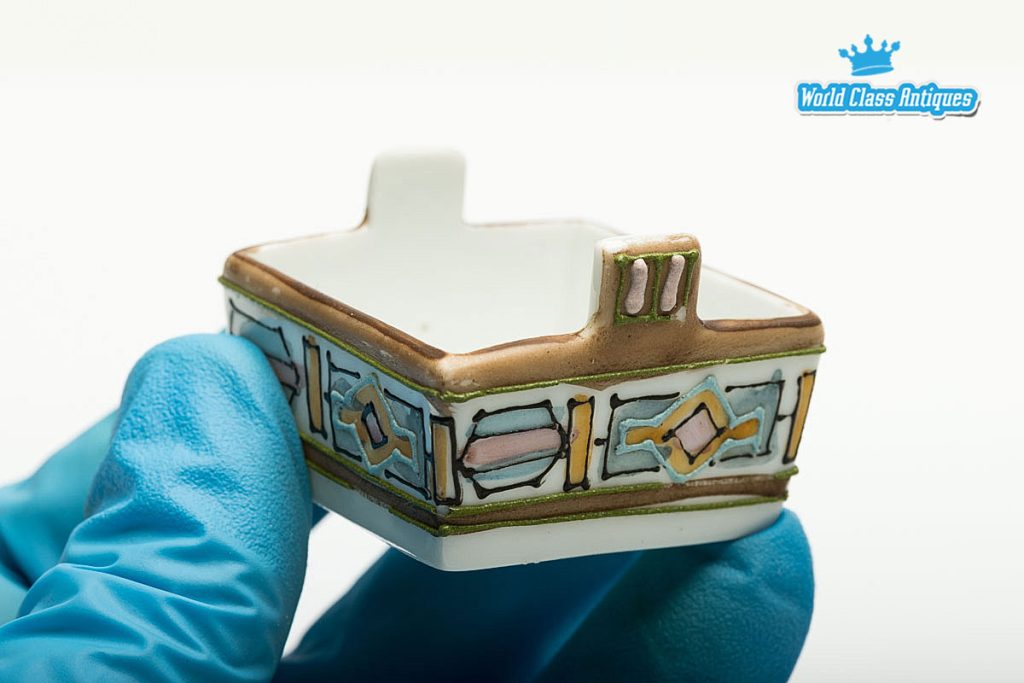
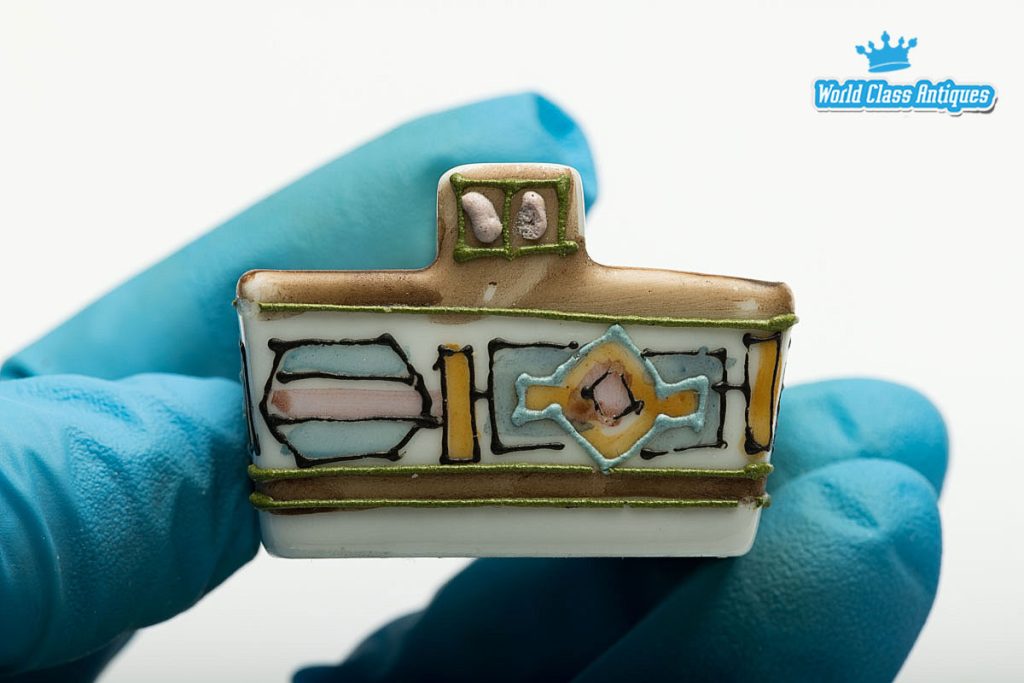
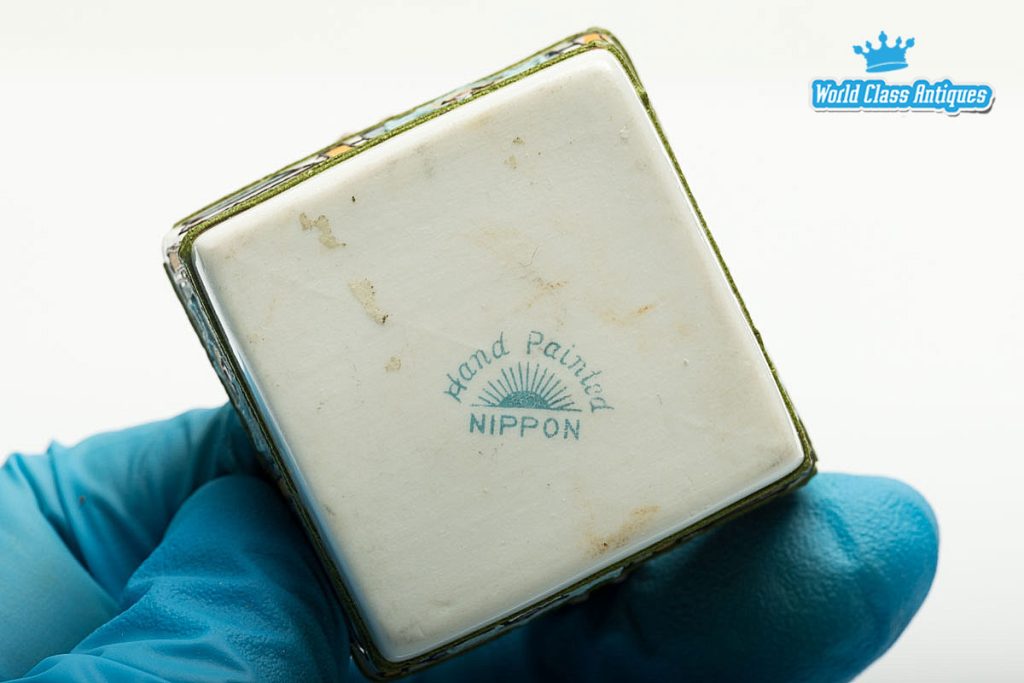
Why These Are Worth Collecting
- They are affordable: Most sell for around $10-$15, making them an easy entry into vintage collecting.
- Salt cellars are compact: Small and easy to store, even if you don’t have much display space.
- They are still functional: Use them for salt, jewelry, or as decorative pieces.
- They have a historical value: Such vintage or antique salt cellars reflect early 20th-century trade laws, porcelain craftsmanship, and evolving styles.
If you want a collection that is simple to start, enjoyable to hunt for, and rich in history, ceramic salt cellars are a great choice. And if you decide to sell, well-chosen pieces in outstanding condition could bring a profit in the future.
If these salt cellars caught your eye, wait until you see what else we have. Check out our marketplace for more.


